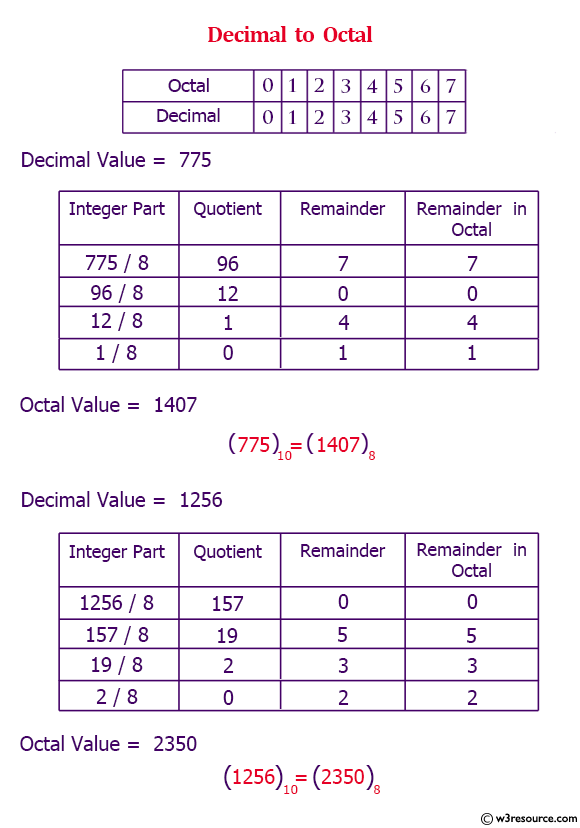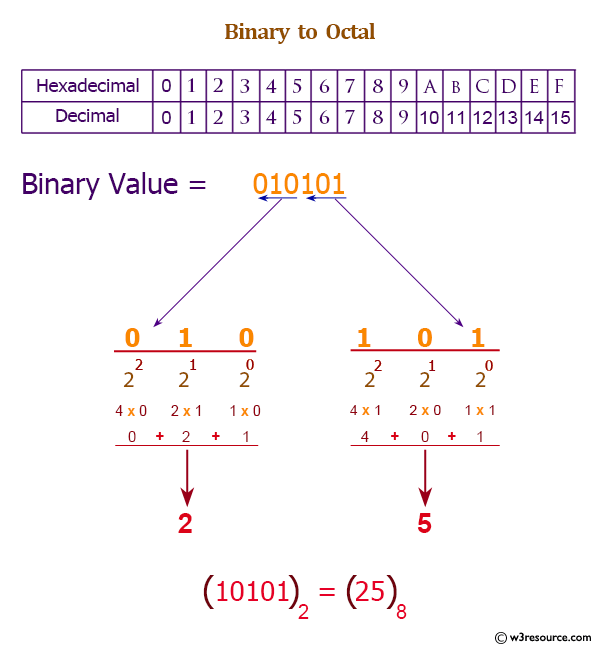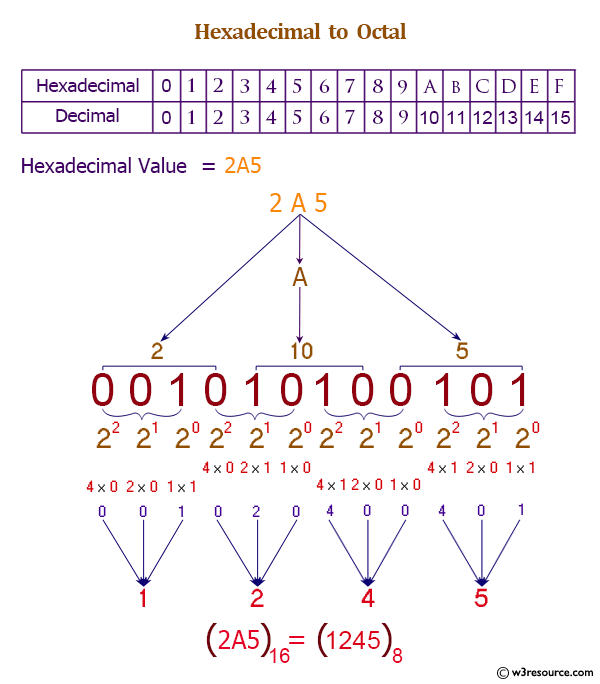Python: oct() function
oct() function
The oct() function is used to convert an integer number to an octal string.
Octal strings in Python are prefixed with 0o.
Version:
(Python 3.2.5)
Syntax:
oct(x)
Parameter:
| Name | Description | Required / Optional |
|---|---|---|
| x | An integer. | Required |
Return value:
Returns an octal string from the given integer number.
Example: Python oct() function
# decimal number
print('oct(11) is:', oct(11))
# binary number
print('oct(0b110) is:', oct(0b110))
# hexadecimal number
print('oct(0XB) is:', oct(0XB))
Output:
oct(11) is: 0o13 oct(0b110) is: 0o6 oct(0XB) is: 0o13
Pictorial Presentation:

Pictorial Presentation:

Pictorial Presentation:

Python Code Editor:
Previous: object()
Next: open()
Test your Python skills with w3resource's quiz
